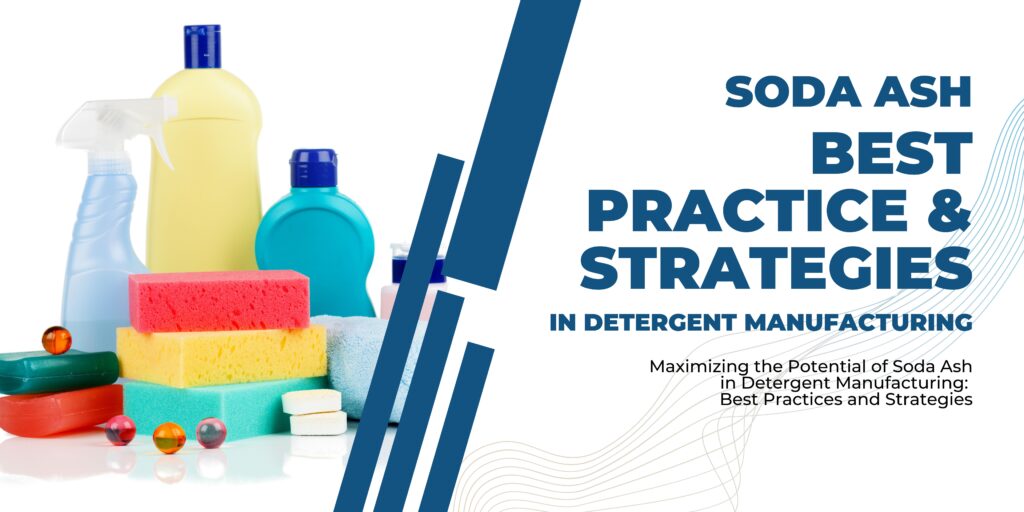Detergents have become an indispensable part of our daily lives. From cleaning our clothes to washing dishes and surfaces, detergents play a significant role in keeping our surroundings clean and hygienic. While there are many ingredients that go into making a detergent, one of the most essential ones is soda ash. Soda ash, also known as sodium carbonate, is a versatile chemical that is used in a wide range of industries, including glass manufacturing, water treatment, and most commonly, in detergent manufacturing.
Soda ash is used in detergents as a builder, which helps to soften water and enhance the cleaning power of the detergent. Hard water contains high levels of minerals like calcium and magnesium that can interfere with the cleaning process and leave behind residue. Soda ash helps to counteract the effects of hard water by neutralizing the minerals and making the water softer. This allows the detergent to work more effectively by removing dirt and stains from fabrics and surfaces.
In addition to its role as a builder, soda ash can also be used to adjust the pH level of the detergent. The pH level of a detergent can have a significant impact on its performance on certain types of stains. For example, acidic stains like fruit juice and wine can be effectively removed with a more alkaline detergent, while alkaline stains like grease and oil can be removed with a more acidic detergent. By adjusting the pH level of the detergent, detergent manufacturers can create formulations that are optimized for specific cleaning tasks.
So, how can detergent manufacturers maximize the potential of soda ash in their formulations? There are several best practices and strategies that they can follow to ensure that soda ash is used effectively and efficiently in their detergents.
Proper handling and storage of soda ash is critical to ensuring its effectiveness. Soda ash is a delicate material that can degrade over time if it is exposed to air or moisture. Detergent manufacturers should store soda ash in a dry, cool place and use it within a reasonable timeframe to ensure maximum effectiveness. Ideally, soda ash should be used within the first three months from production.
The amount of soda ash used in a detergent formulation can have a significant impact on its cleaning power. Detergent manufacturers should carefully consider the optimal dosage of soda ash for their specific formulation. Too little soda ash can result in hard water residue and poor cleaning performance, while too much can lead to excess foam and potential damage to fabrics. Proper dosage testing is essential to ensure that the right amount of soda ash is used in the detergent formulation.
Soda ash can react with certain materials and fabrics, so it is important to test the compatibility of the detergent formulation before launching it on the market. Compatibility testing can help to identify potential issues and prevent damage to fabrics or surfaces. Compatibility testing involves testing the detergent on a variety of fabrics and surfaces to ensure that it does not cause any damage or discoloration.
In addition to these best practices, detergent manufacturers can also consider using other additives and ingredients to enhance the performance of their detergents. For example, enzymes can be added to detergents to break down tough stains like blood and grass. Optical brighteners can be added to make whites appear brighter and colors appear more vibrant. Fragrances can be added to create a pleasant scent.
In conclusion, soda ash is a key ingredient in detergent manufacturing that plays a critical role in enhancing the cleaning power of detergents. By following best practices and strategies for handling and storing soda ash, determining proper dosage, and conducting compatibility testing, detergent manufacturers can ensure that they are using soda ash effectively and efficiently in their formulations. By doing so, they can create effective, high-quality detergents that meet the needs of consumers.

